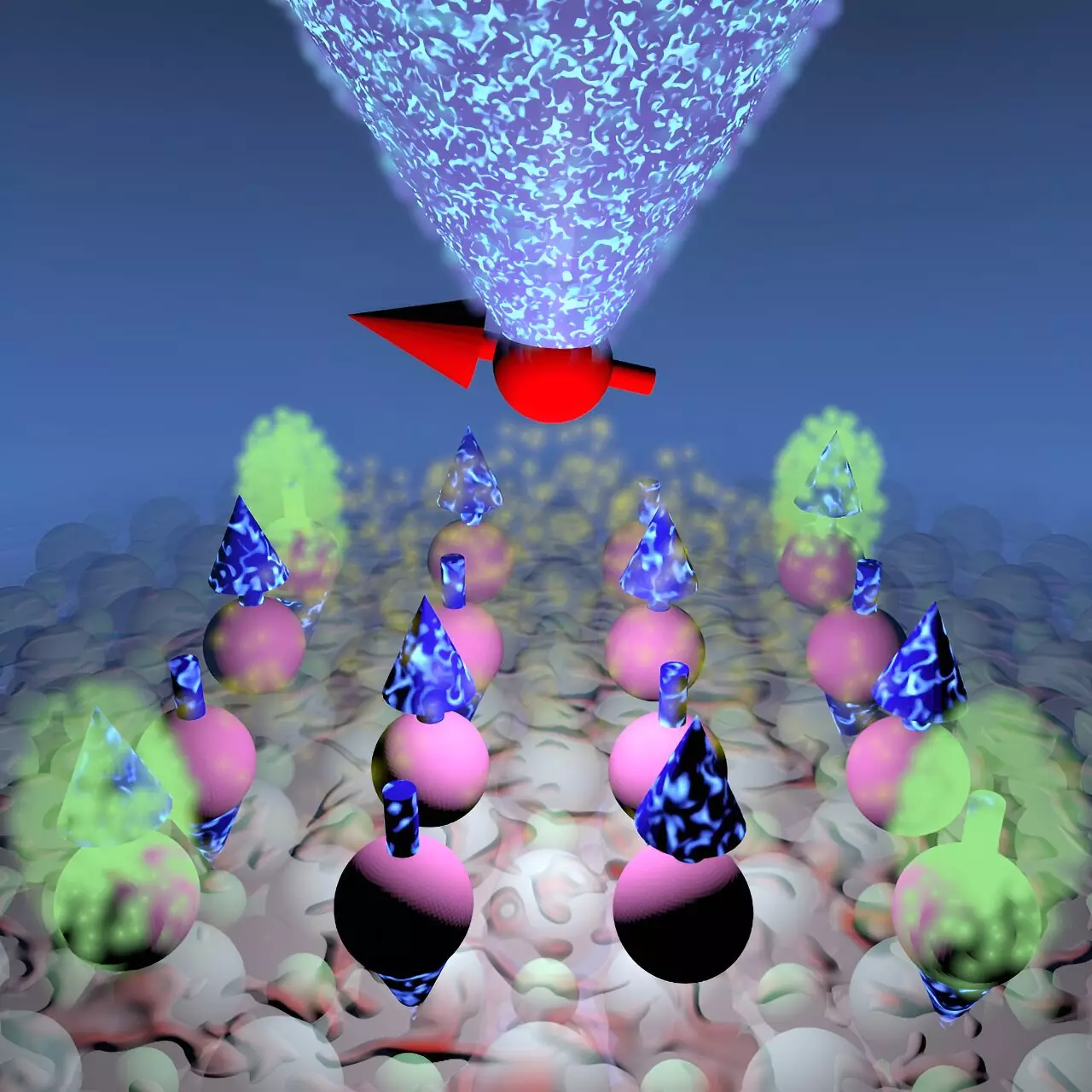In the ever-evolving landscape of quantum physics, researchers continually uncover novel states of matter, revealing complex interactions and phenomena that challenge our understanding of the physical world. At the intersection of theoretical design and experimental engineering, recent advancements have given rise to an exciting new collective state of matter known as higher-order topological quantum magnets. This innovative state stands as a testament to the power of collaboration between leading institutions, specifically Aalto University and the Institute of Physics CAS, as they meticulously crafted an artificial quantum material at the atomic level, utilizing magnetic titanium and magnesium oxide substrates.
The groundwork for this pioneering quantum material was laid by the theoretical design of José Lado, an assistant professor at Aalto University. Lado’s vision involved the engineering of topological quantum magnetism, positioning this material as a new paradigm in quantum study. By entangling the interactions of magnetic atoms, he established a framework through which these exotic properties could be realized experimentally. This approach fundamentally shifted the understanding of how quantum excitations can arise from engineered interactions, presenting a pathway for practical applications in the realm of quantum technologies.
Innovative Experimental Techniques
The experimental realization of Lado’s theoretical groundwork was spearheaded by a research group led by Associate Professor Kai Yang at the Institute of Physics CAS. Utilizing cutting-edge scanning tunneling microscopy (STM), the team executed a series of precise manipulations, akin to an artist sculpting a masterpiece from the chaos of raw materials. Their technique involved the delicate ‘poking’ of individual atoms with an atomically sharp metal tip, which allowed for the probing and excitation of local magnetic moments with unparalleled precision. This meticulous methodology not only paved the way for observing the desired topological excitations but also exemplified the potential of atomic-level manipulation in quantum engineering.
The Emergence of a New Quantum State
The culmination of these efforts led to the successful demonstration of a higher-order topological quantum magnet—an achievement that not only expands our understanding of quantum states but also indicates a significant leap toward robust quantum technologies. Unlike conventional magnets, these topological quantum magnets exhibit exotic excitations characterized by a unique superposition of magnetic states, enabling properties such as fractional excitations. Here, electrons can behave in ways that transcend traditional physics, splitting into fractional components that offer a rich tapestry for future exploration.
The research team’s findings illustrated that these topological excitations boasted substantial resistance to external perturbations, a feature consistent with Lado’s theoretical predictions. This trait is critical in the progression toward practical applications, as it implies that quantum coherence—essential for performance stability in quantum information systems—could be enhanced within this novel material.
The excitement surrounding higher-order topological quantum magnets extends beyond theoretical significance; these materials hold transformative potential for quantum technologies. The inherent protection against decoherence that these materials provide could be a game-changer, addressing some of the critical challenges facing current qubit technology. Decentralizing quantum states through these exotic excitations positions topological quantum magnets as potential cornerstones for future quantum computing architectures, promising improved reliability and functionality.
As the research community collectively navigates these new landscapes in quantum mechanics, the implications grow clearer: the engineering of quantum states is not merely an academic pursuit; it is a vital step toward the realization of practical technologies that could redefine our interaction with information and computation. The creation of many-body topological quantum magnets opens new doors, presenting an exciting frontier in physics where the lines between theoretical speculation and practical application continue to blur.
The synthesis of these novel quantum materials exemplifies the remarkable potentials accessible when theory meets innovative experimentation. With further investigations and developments, higher-order topological quantum magnets may soon lead us into an era of unprecedented quantum paradigms, unlocking many possibilities that remain just beyond our current understanding.


Leave a Reply